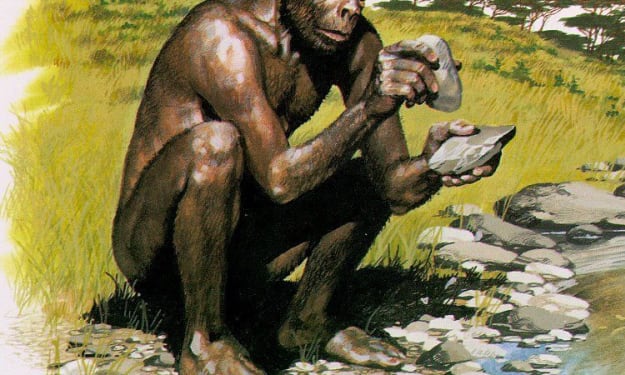
Homo erectus is an extinct species of the Homo genus that lived between approximately 1.8 million and 300,000 years ago. The species was first discovered in Java, Indonesia in the late 19th century, and later fossils were found throughout Asia and Africa. Homo erectus is considered one of the most successful human ancestors, as they lived for over a million years and were able to migrate to various parts of the world.
Physical Characteristics
Homo erectus had a number of physical characteristics that helped them adapt to their environment. They were the first human ancestors to have a modern-looking body shape, with long legs and short arms. This body type was ideal for long-distance walking and running, which would have been necessary for migration and hunting.
Homo erectus had a cranial capacity of around 850 to 1100 cc, which is larger than that of Homo habilis. This indicates that they had a larger brain and were likely more intelligent. Their skull was also more robust, with thick brow ridges, a flat forehead, and a projecting jaw. These features suggest that they were adapted for chewing tough plant materials and hunting large game.
Behavior
Homo erectus was the first human ancestor to use fire, which was a significant technological advancement that allowed them to cook food and stay warm in colder environments. Evidence of fire use has been found at archaeological sites throughout the world, including Africa, Europe, and Asia.
Homo erectus was also a skilled hunter, as evidenced by their use of tools for hunting and butchering animals. They created hand axes and cleavers by chipping stone flakes from a core, which allowed them to cut through animal hide and bones. These tools were found at many Homo erectus sites and were likely used for hunting and food processing.
Migration
Homo erectus is believed to be the first human ancestor to migrate out of Africa and into other parts of the world. Fossils of Homo erectus have been found in Europe, Asia, and Indonesia, which suggests that they were able to travel great distances and adapt to various environments.
One of the most famous Homo erectus fossils is the "Java Man," discovered by Eugene Dubois in the late 19th century in Indonesia. This discovery helped support the theory that humans originated in Africa and then migrated to other parts of the world.
Culture
Homo erectus is believed to have had a rich culture, although much of their behavior and beliefs are unknown. Evidence of their culture comes from their use of fire, hunting tools, and stone hand axes. They likely lived in groups and had complex social structures, as evidenced by the discovery of large Homo erectus campsites.
It is believed that Homo erectus may have had a language, as their increased cranial capacity suggests that they had the ability to develop language. However, there is no direct evidence of this, as language does not fossilize.
However, it is important to note that sexual orientation is a modern concept that refers to an individual's enduring pattern of emotional, romantic, or sexual attraction to men, women, or both genders. This concept is rooted in cultural and social factors, and may not have been relevant or expressed in the same way in past societies.
What we do know about Homo erectus is that they were a highly successful and widespread species that existed for over 1.5 million years, during which time they underwent significant physiological and behavioral changes. They were the first hominin to migrate out of Africa, with fossils found in Europe and Asia, and were skilled hunters and toolmakers. They also had a relatively large brain size compared to earlier hominins, which suggests that they had more complex social and cognitive abilities.
Conclusion
Homo erectus was a highly successful human ancestor that lived for over a million years and was able to adapt to various environments. They were the first human ancestors to have a modern-looking body shape, and were skilled hunters and toolmakers. They were also the first human ancestors to use fire, which was a significant technological advancement. Homo erectus is believed to have been the first human ancestor to migrate out of Africa and into other parts of the world, and had a rich culture that included complex social structures.
About the Creator
Kobra
"Enter the dark and twisted world of the unknown I lead you through the shadows on a journey into the depths of the unknown."
"Uncovering darkness"
Enjoyed the story? Support the Creator.
Subscribe for free to receive all their stories in your feed. You could also pledge your support or give them a one-off tip, letting them know you appreciate their work.






Comments
There are no comments for this story
Be the first to respond and start the conversation.